Despite billion-dollar investments, the technology faces hurdles that keeps its future uncertain


A new water-based plasma technique is opening fresh possibilities for carbon conversion.
Chinese researchers have created stable high-entropy alloy nanoparticles—containing five metals in nearly equal ratios—directly in solution, thereby overcoming long-standing challenges in nanoscale alloy synthesis.
These particles form a self-protecting, oxidized shell, delivering strong photothermal performance that utilizes visible and infrared light to drive carbon dioxide into carbon monoxide more efficiently than single-metal catalysts.
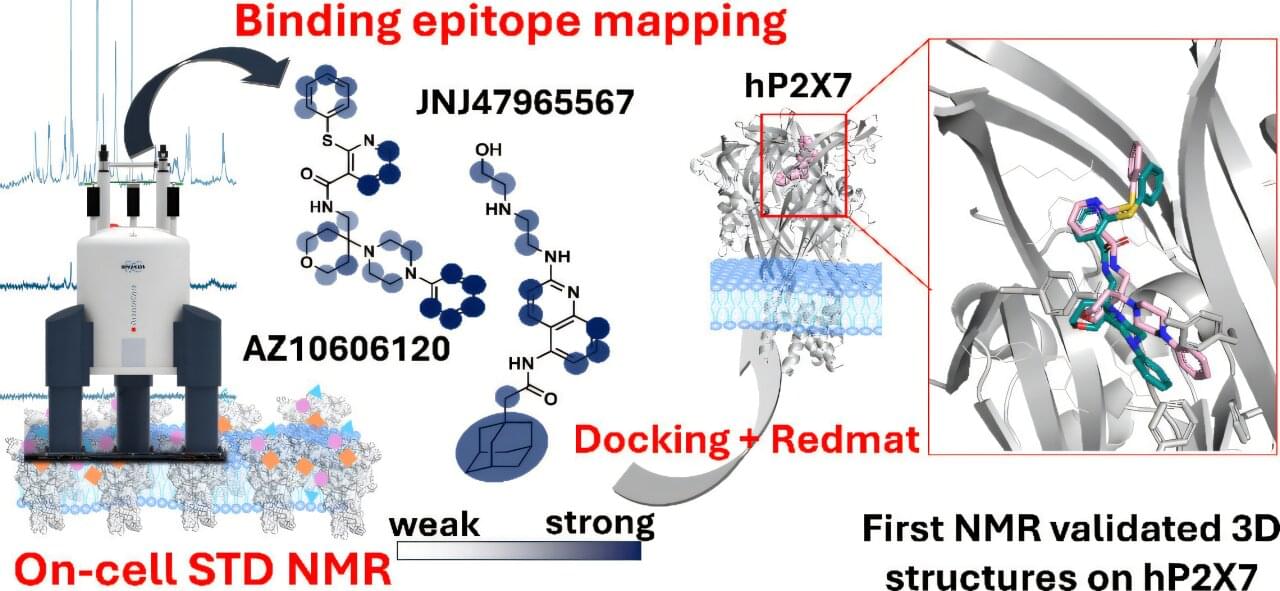
An international team involving the Institute of Chemical Research, a joint center of the University of Seville and the Spanish National Research Council, has developed a new technique that will accelerate the design of drugs that target ion channels, a type of cell membrane protein involved in numerous diseases, ranging from psychiatric disorders to various types of cancer.
The research, carried out in collaboration with the University of East Anglia and the Qadram Institute (both in the United Kingdom), has been published in the Journal of the American Chemical Society.
Ion channels are cell membrane proteins that regulate the passage of ions into the cell. They are essential in processes as diverse as nerve transmission, muscle contraction and immune response and their dysfunction is associated with numerous disorders, making them therapeutic targets of great interest.
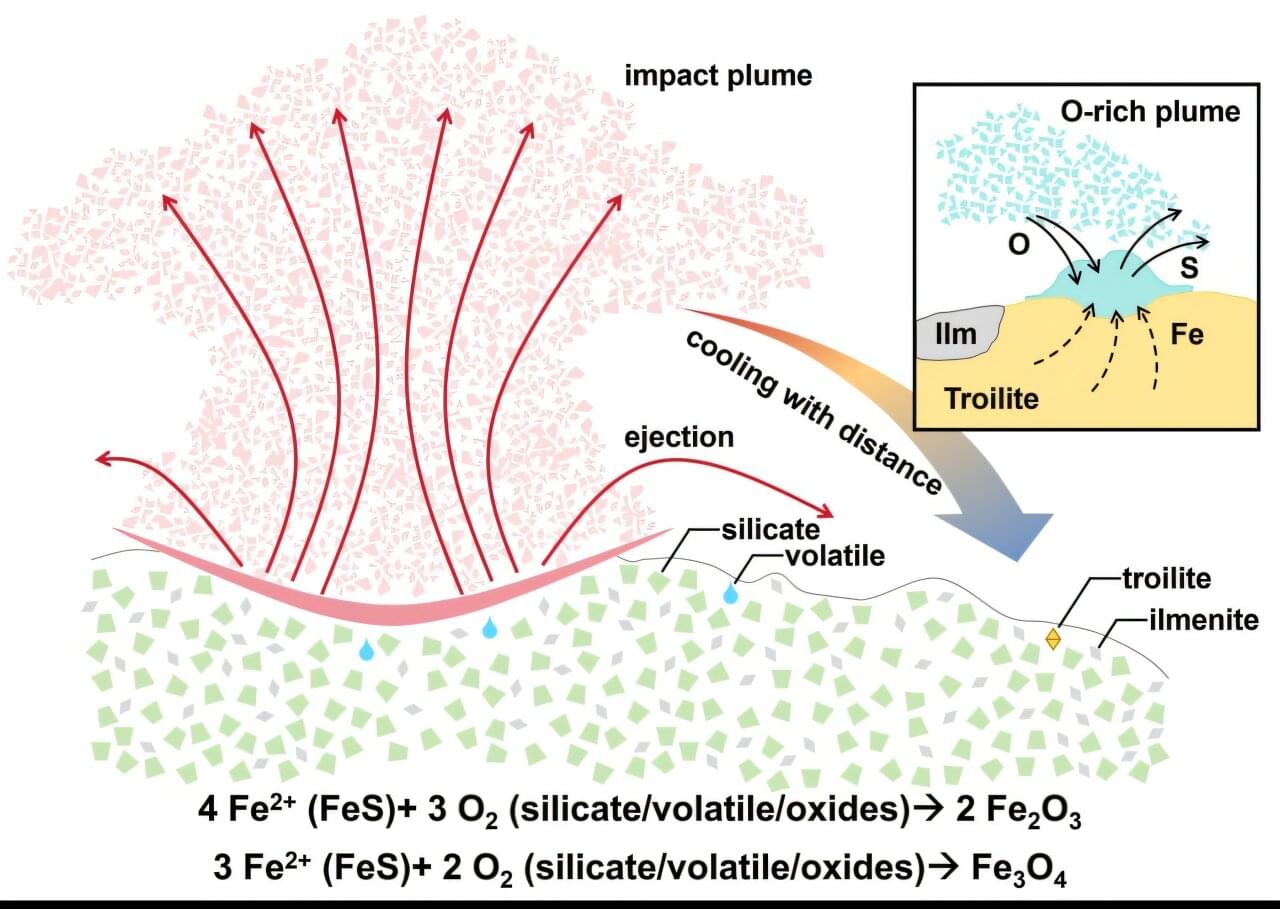
A joint research team from the Institute of Geochemistry of the Chinese Academy of Sciences (IGCAS) and Shandong University has for the first time identified crystalline hematite (α-Fe2O3) and maghemite (γ-Fe2O3) formed by a major impact event in lunar soil samples retrieved by China’s Chang’e-6 mission from the South Pole–Aitken (SPA) Basin. This finding, published in Science Advances on November 14, provides direct sample-based evidence of highly oxidized materials on the lunar surface.
Redox reactions are a fundamental component of planetary formation and evolution. Nevertheless, scientific studies have shown that neither the oxygen fugacity of the lunar interior nor the lunar surface environment favors oxidation. Consistent with this, multivalent iron on the moon primarily exists in its ferrous (Fe2+) and metallic (Fe0) states, suggesting an overall reduced state. However, with further lunar exploration, recent orbital remote sensing studies using visible-near-infrared spectroscopy have suggested the widespread presence of hematite in the moon’s high-latitude regions.
Furthermore, earlier research on Chang’e-5 samples first revealed impact-generated sub-micron magnetite (Fe3O4) and evidence of Fe3+ in impact glasses. These results indicate that localized oxidizing environments on the moon existed during lunar surface modification processes driven by external impacts.

Natural gas—one of the planet’s most abundant energy sources—is primarily composed of methane, ethane, and propane. While it is widely burned for energy, producing greenhouse gas emissions, scientists and industries have long sought ways to directly convert these hydrocarbons into valuable chemicals. However, their extreme stability and low reactivity have posed a formidable challenge, limiting their use as sustainable feedstocks for the chemical industry.
Now, a team led by Martín Fañanás at the Center for Research in Biological Chemistry and Molecular Materials (CiQUS) at the University of Santiago de Compostela has developed a groundbreaking method to transform methane and other natural gas components into versatile “building blocks” for synthesizing high-demand products, such as pharmaceuticals. Published in Science Advances, this advance represents a critical leap toward a more sustainable and circular chemical economy.
For the first time, the CiQUS team successfully synthesized a bioactive compound—dimestrol, a non-steroidal estrogen used in hormone therapy—directly from methane. This achievement demonstrates the potential of their methodology to create complex, high-value molecules from a simple, abundant, and low-cost raw material.

MIT researchers have developed a lightweight polymer film that is nearly impenetrable to gas molecules, raising the possibility that it could be used as a protective coating to prevent solar cells and other infrastructure from corrosion, and to slow the aging of packaged food and medicines.
The polymer, which can be applied as a film mere nanometers thick, completely repels nitrogen and other gases, as far as can be detected by laboratory equipment, the researchers found. That degree of impermeability has never been seen before in any polymer, and rivals the impermeability of molecularly-thin crystalline materials such as graphene.
“Our polymer is quite unusual. It’s obviously produced from a solution-phase polymerization reaction, but the product behaves like graphene, which is gas-impermeable because it’s a perfect crystal. However, when you examine this material, one would never confuse it with a perfect crystal,” says Michael Strano, the Carbon P. Dubbs Professor of Chemical Engineering at MIT.
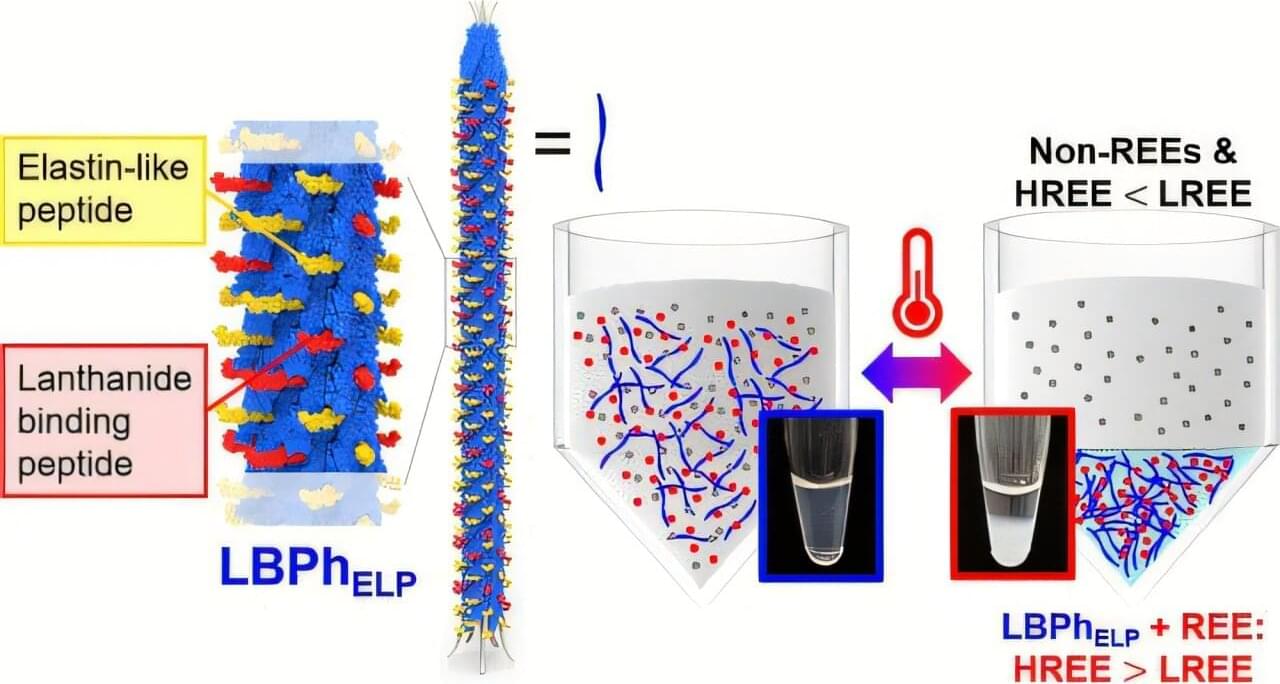
Today’s high-tech electronics and green energy technologies would not function without rare earth elements (REEs). These 17 metals possess unique properties essential to creating items like the phosphors that illuminate our mobile phone displays and the powerful magnets used in electric vehicles and wind turbines. But extracting these substances from raw materials is a dirty process that relies on toxic chemicals and leaves behind polluted waste.
Now, a team of UC Berkeley-led researchers may have solved this problem—thanks to a tiny virus.
As reported in Nano Letters, the researchers genetically engineered a harmless virus to act like a “smart sponge” that grabs rare earth metals from water, and, with a gentle change in temperature and acidity (pH), releases them for collection. Their unusual, groundbreaking approach could lead to a “clean” biological alternative to traditional extraction methods for REEs and other critical elements.
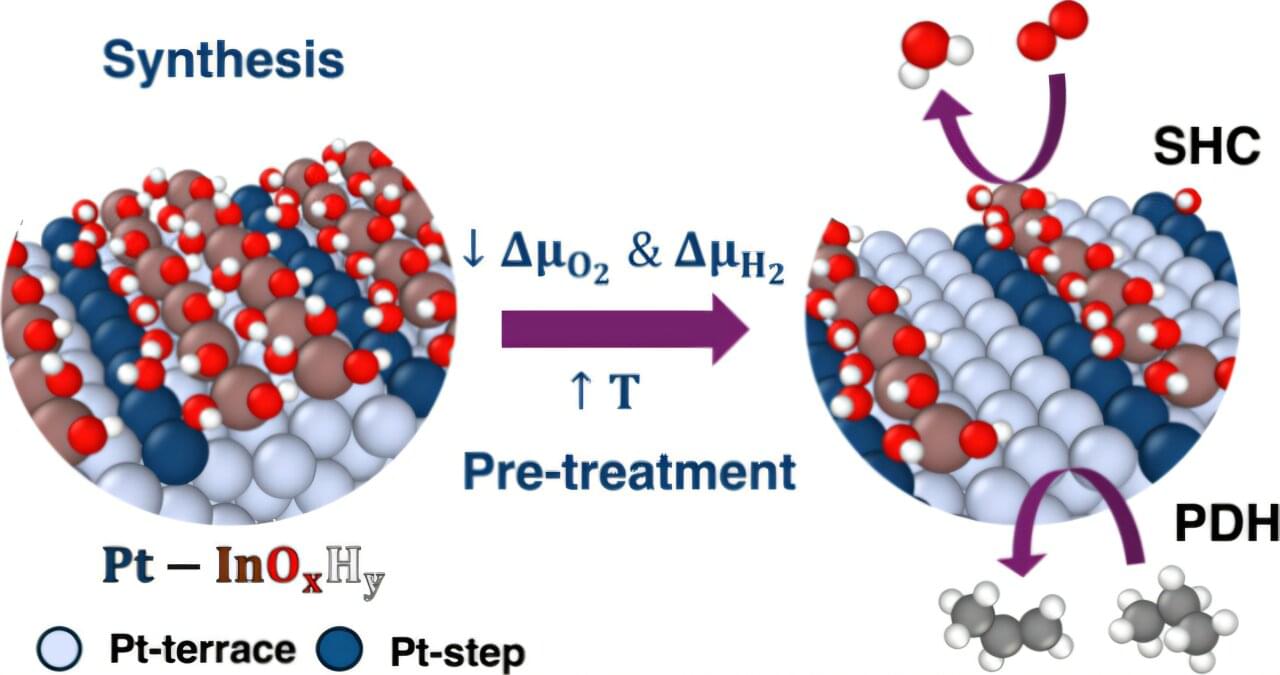
Countless everyday products, from plastic squeeze bottles to outdoor furniture, are derived by first turning propane into propylene.
A 2021 study in Science demonstrated that chemists could use tandem nanoscale catalysts to integrate multiple steps of the process into a single reaction—a way for companies to increase yield and save money. But it was unclear what was happening at the atomic level, making it difficult to apply the technique to other key industrial processes.
Researchers at the University of Rochester have developed algorithms that show the key atomic features driving the complex chemistry when the nanoscale catalysts turn propane into propylene.
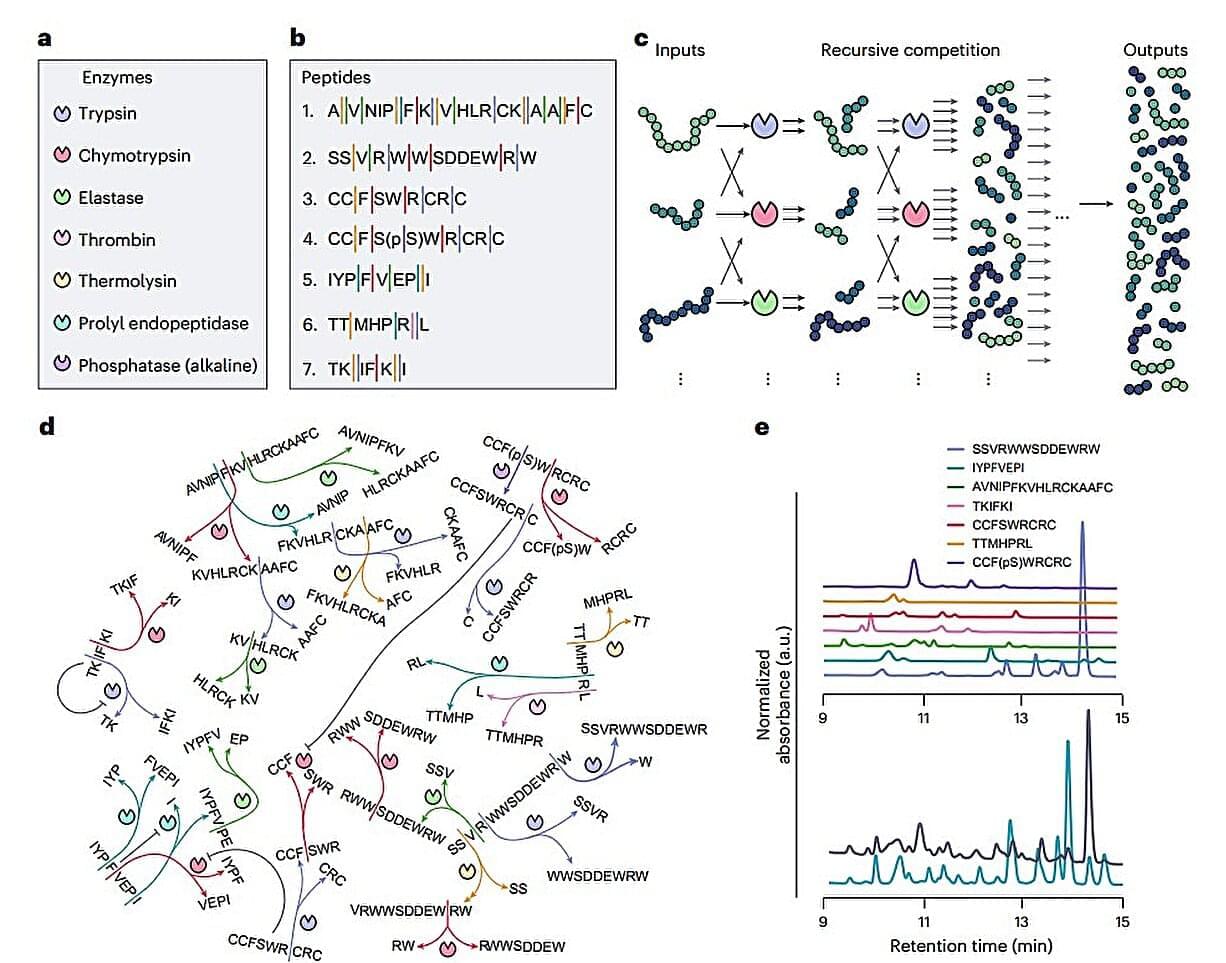
The ability to respond to changing surroundings was once considered exclusive to complex living organisms. Then came computers, specially designed for stimulus–response tasks, which can take in signals from their environment and choose what to do next based on the instructions already written into them.
Scientists have long wanted to replicate this kind of behavior in chemical systems. Life and computers both need many parts working in sync to make decisions, so expecting a handful of chemicals in a test tube to do the same seemed quite far-fetched.
Not anymore. A team of researchers from the Netherlands and Australia has developed a novel chemical network where different peptides compete for enzymes—specifically proteases arranged in a network. This competition causes the chemical mixture to reorganize itself, forming an enzymatic network that adapts to the external environment.
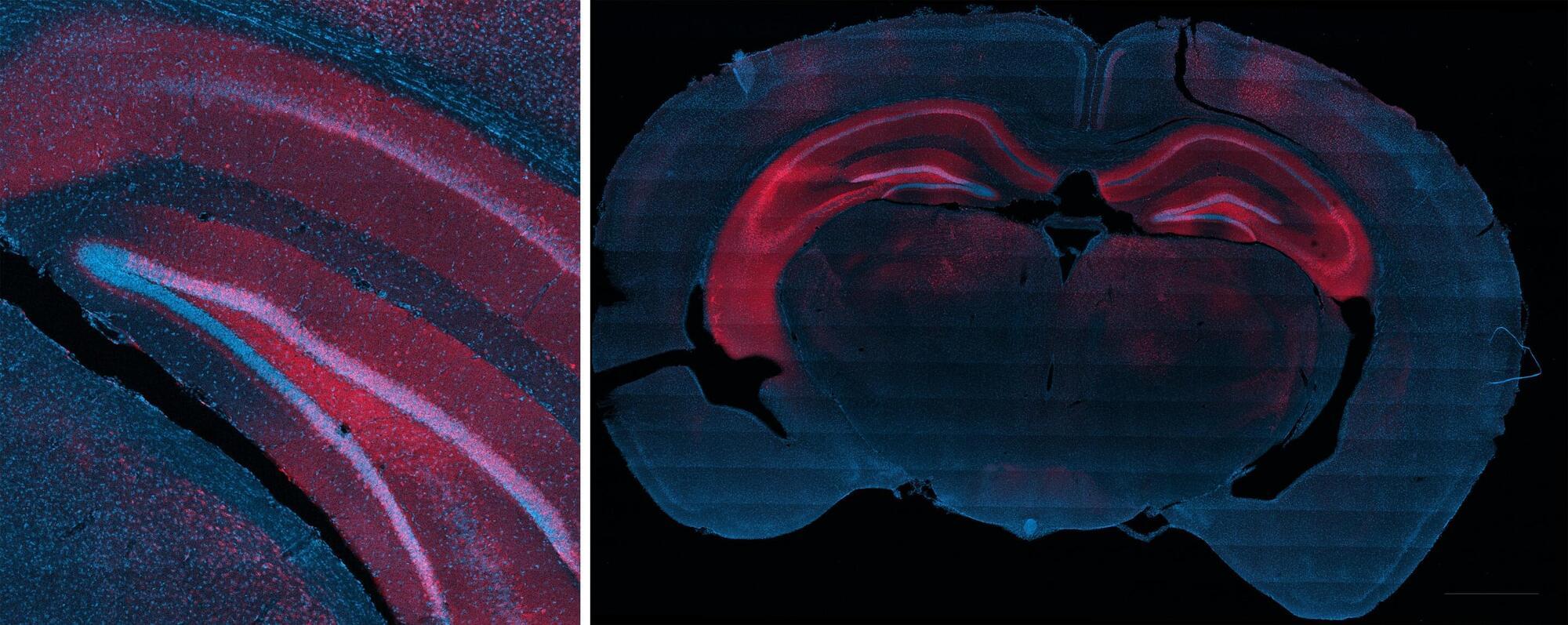
Rice University bioengineers have demonstrated a nonsurgical way to quiet a seizure-relevant brain circuit in an animal model. The team used low-intensity focused ultrasound to briefly open the blood-brain barrier (BBB) in the hippocampus, delivered an engineered gene therapy only to that region and later flipped an on-demand “dimmer switch” with an oral drug.
The research shows that a one-time, targeted procedure can modulate a specific brain region without impacting off-target areas of the brain. It is published in and featured on the cover of ACS Chemical Neuroscience.
“Many neurological diseases are driven by hyperactive cells at a particular location in the brain,” said study lead Jerzy Szablowski, assistant professor of bioengineering and a member of the Rice Neuroengineering Initiative. “Our approach aims the therapy where it is needed and lets you control it when you need it, without surgery and without a permanent implant.”